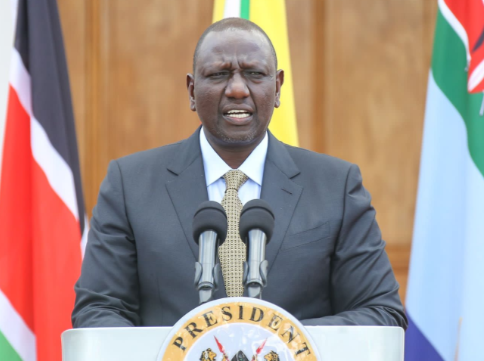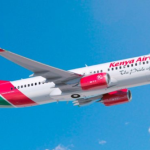Kenya is among 23 countries projected to allocate more than 20 percent of their revenue towards servicing external debt, a matter that continues to draw scrutiny during President William Ruto’s administration.
According to the latest report from Debt Justice, a partner of the UK-based non-governmental organization Christian Aid, Kenya is expected to spend 26.1 percent of its domestic revenue on repaying external loans this year, ranking eighth highest in Africa.
Angola leads the continent in dedicating domestic revenue to external debt repayment at 59.8 percent, followed by Zambia at 43.5 percent, Egypt at 38.8 percent, Djibouti at 37.8 percent, Tunisia at 31.4 percent, Gabon at 29.1 percent, and Benin at 27.3 percent. Titled ‘Between Life and Debt’, the report highlights Kenya’s rapid increase in external debt payments, rising from an average of six percent of government revenue between 2008 and 2016 to 24 percent in 2019, and now to at least 26 percent in the current year.
The report notes that nearly half of Kenya’s external debt payments between 2023 and 2025 are owed to private creditors, primarily bondholders.
“This is because these debts have the highest interest rates and shortest maturities. Almost a quarter of external debt payments are to China, with the rest to multilateral lenders and other governments,” the report by Christian Aid reads.
The escalating external debt burden could potentially undermine Kenya’s debt relief prospects, reminiscent of the late 1990s and early 2000s when the International Monetary Fund (IMF) deemed the country’s debt sustainable. During that period, external government debt payments averaged 26 percent of government revenue.
According to the IMF, governments typically face challenges in servicing external debts once they exceed 14-23 percent of government revenue. The report also highlights that as Kenya’s debt payments rise, public spending has sharply declined. Between 2017 and 2022, real per capita public spending (excluding interest payments) plummeted by a significant 15 percent. Projections indicate that by 2025, it will still be seven percent lower than in 2017, resembling levels seen in 2015, marking a decade without any real increase in public spending.
The National Taxpayers Association, a partner of Christian Aid, observes that this reduction in spending has led to inadequate essential services in health and education facilities.
“This has led to a lack of medicines and specialized equipment in most of the hospitals where they can access free treatment. There are also delays in government disbursements of capitations to schools as well as payments for social protection transfers and public works programmes adequate resources to sustain social services.”
Even with the ongoing stagnation in government spending, and new loans from multilateral lenders, it is unable to pay this amount.
“In the absence of an effective debt restructuring mechanism or outright debt cancellation, the government has decided to largely repay the bond through more borrowing from the same lenders.”
In 2021, Eurodad found that the three largest holders of Kenya’s bonds were AllianceBernstein, Lord, Abbett and Co. and BlackRock.
In February 2024, Kenya borrowed $1.5 billion through a new bond, at 10.375 percent interest.
“Like Kenya’s previous foreign currency bonds, this new bond is governed by English law. None of this money will be invested – it will all be used to repay the previous bond.”
In return, Kenya will be paying $155 million (Sh19.8 billion) annually in interest payments, significantly higher than previous bonds that carried interest rates of six to seven percent. This situation further constrains the government’s capacity to allocate funds towards community needs.
The reality of these financial obligations has fueled public dissatisfaction with the current government, prompting bi-weekly protests that compelled President William Ruto to establish an independent task force for conducting a public debt audit. Speaking from State House on Friday, he acknowledged that public debt remains a focal point of discussion and concern in Kenya.
“I have today appointed an independent task force to carry out a comprehensive forensic audit over public debt and report to us in the next three months,” he said.
In 2024, 28 African countries will have external debt payments of over 14 per cent of government revenue, with 23 of these paying over 20 per cent of government revenue.
In contrast, in 2010 no African governments were spending over 20 per cent of revenue on external debt payments, and only one, Tunisia, was spending more than 14 per cent.
According to the report, African governments’ external debt payments will average at least 18.5 per cent of budget revenues in 2024, the highest since 1998.



